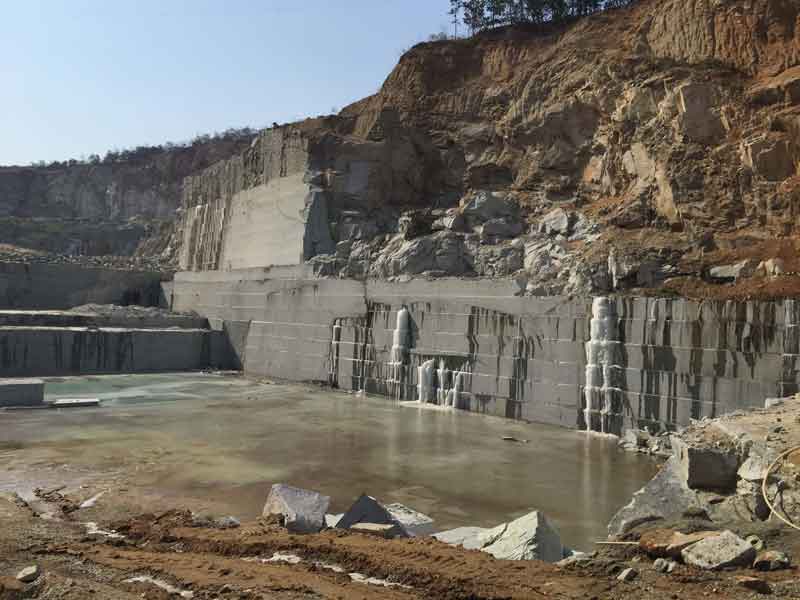Finding the Appeal of Granite Quarry in South Africa Marvels
Finding the Appeal of Granite Quarry in South Africa Marvels
Blog Article
Uncovering the Rich History and Lasting Practices of Granite Quarrying
As we base on the precipice of revealing the complex tapestry of granite quarrying, a trip with time discloses not just the physical act of drawing out rock but additionally the cultural and historical value woven into the really fabric of this method. From the old beginnings that laid the foundation for modern-day quarrying methods to the lasting practices that are shaping the future of this sector, each chisel mark on granite surfaces informs a story waiting to be discovered (granite quarries in south africa). The heritage of granite quarrying stretches much beyond plain extraction; it is a testimony to human resourcefulness, resilience, and the enduring attraction of this marvelous stone
Ancient Beginnings of Granite Quarrying
Dating back to ancient civilizations, the practice of quarrying granite has actually been an indispensable part of human history and building innovation. The earliest evidence of granite quarrying dates back to old Egypt, where enormous pyramids and intricate sculptures were crafted from this resilient stone. The Egyptians used primitive devices to remove granite blocks from quarries, showcasing the relevance of this product in their monumental constructions.
Moving ahead in history, the Greeks likewise made considerable payments to the quarrying of granite. The Greeks utilized granite in different building marvels, such as temples and statues, demonstrating their ability in shaping and sculpting this durable rock. The Romans better improved the strategies of quarrying granite, using innovative devices like knives and hammers to extract and form granite for their famous frameworks.
Via the centuries, the technique of quarrying granite has actually advanced, with modern-day innovations improving effectiveness while preserving the timeless charm of this all-natural rock - granite quarries in south africa. From ancient people to contemporary home builders, the tradition of granite quarrying continues to shape our world
Evolution of Quarrying Strategies
The advancement of quarrying methods has been marked by a continuous development in the direction of higher performance and precision in extracting granite. From the simple techniques employed by our ancestors to the innovative modern technologies used in contemporary quarrying operations, the sector has actually gone through significant advancements. Early quarrying strategies entailed manual work with standard tools such as chisels, hammers, and wedges to extract granite blocks from the planet. As people advanced, techniques like fire-setting and primitive nitroglycerins were introduced to promote the extraction procedure.
Advancements in computer-controlled equipment and 3D modeling have maximized quarrying procedures, leading to minimal ecological effect and improved sustainability practices. As the demand for granite proceeds to increase, the evolution of quarrying strategies remains indispensable to meeting industry requires effectively and sustainably.
Social Value of Granite
Granite holds an extensive cultural importance across numerous human beings due to its enduring presence in architectural work of arts and admired monuments. The cultural relevance of granite expands beyond its physical characteristics; it symbolizes strength, security, and eternity, making it a sign of enduring heritages and customs.

Sustainable Practices in Quarrying
Among the rich history of granite quarrying and its cultural importance lies an expanding focus on lasting methods within the sector. As ecological awareness and issues about source exhaustion have enhanced around the world, the quarrying field has actually progressively accepted sustainable methods to reduce its influence on the environment and surrounding areas.

In addition, improvement and rehabilitation of quarry sites post-extraction are indispensable to sustainable techniques. By bring back quarried locations to a natural or useful state, such as developing wild animals habitats or entertainment spaces, quarriers can balance out the ecological impact of their procedures and contribute favorably to the regional ecological community.
Heritage of Granite Quarrying
With a historical backdrop soaked in craftsmanship and industrial progress, what sustaining influence has granite quarrying left on the landscape of contemporary society? The legacy of granite quarrying goes beyond simple extraction techniques; it has actually shaped architectural wonders, metropolitan landscapes, and cultural heritage worldwide. The durable nature of granite has actually made it a favored choice for monuments, structures, and facilities, standing as a testament to the ability and artistry of quarry workers throughout generations.
In addition, the financial footprint of granite quarrying can not be forgotten. The market continues to provide job my blog opportunity and drive neighborhood economic climates in regions where granite removal prevails. It has actually likewise spurred technical improvements in quarrying methods and tools, bring about a lot more efficient and lasting techniques.
In regards to sustainability, the tradition of granite quarrying consists of efforts to minimize ecological impacts via improvement tasks and accountable source administration. By balancing financial interests with ecological stewardship, the market strives to ensure that future generations can remain to gain from this enduring natural source.
Conclusion

Report this page